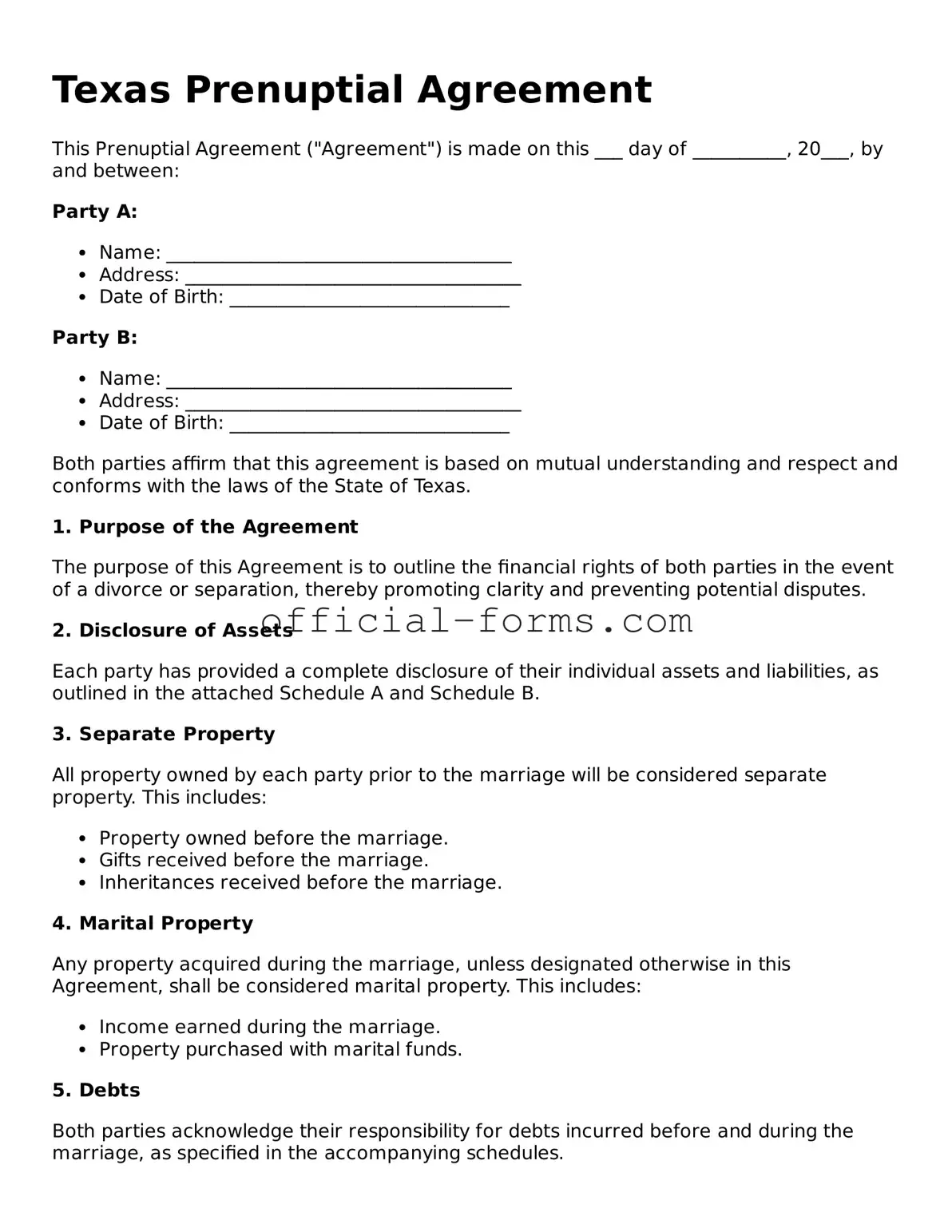Filling out a prenuptial agreement in Texas can be a straightforward process, but many individuals make common mistakes that can lead to complications down the line. Understanding these pitfalls can help ensure that your agreement is valid and enforceable.
One frequent mistake is failing to fully disclose all assets and debts. Transparency is crucial in a prenuptial agreement. If one party conceals financial information, it can lead to disputes and even invalidate the agreement. Both parties should provide a complete and honest account of their financial situations to avoid future complications.
Another common error is not seeking legal advice. While it might seem tempting to fill out the form on your own, consulting with an attorney can provide valuable insights. A lawyer can help clarify the implications of the agreement and ensure that it complies with Texas law. Without professional guidance, you might overlook important legal nuances.
Some individuals rush through the process without considering their long-term needs. A prenuptial agreement should reflect the unique circumstances of both parties. Failing to customize the agreement can lead to misunderstandings and dissatisfaction later on. Take the time to discuss your individual needs and how they can be addressed in the document.
Additionally, neglecting to review the agreement regularly is a mistake many couples make. Life circumstances change, and so do financial situations. It's wise to revisit the prenuptial agreement periodically to ensure it still meets both parties' needs. This can help prevent disputes in the future.
Another error is not signing the agreement in a timely manner. Texas law requires that both parties sign the prenuptial agreement before the marriage takes place. Delaying this step can lead to complications, especially if the relationship takes a turn. Make sure to finalize and sign the agreement well in advance of the wedding date.
Finally, some couples overlook the importance of having the agreement notarized. While not always required, notarization can add an extra layer of legitimacy to the document. It can help prove that both parties entered into the agreement voluntarily and with a clear understanding of its terms.
Avoiding these common mistakes can help ensure that your Texas prenuptial agreement serves its intended purpose. By being thorough, seeking legal advice, and regularly reviewing the document, you can create a solid foundation for your marriage.
